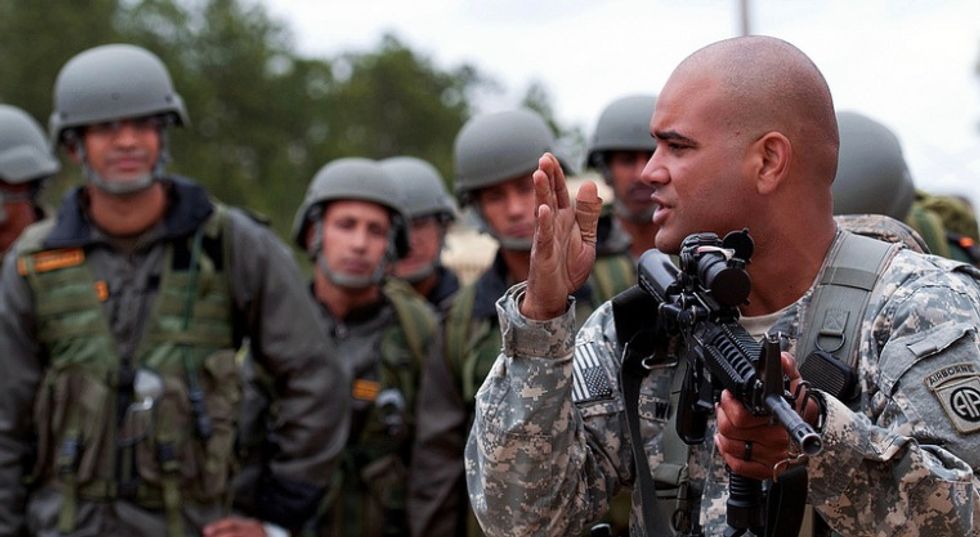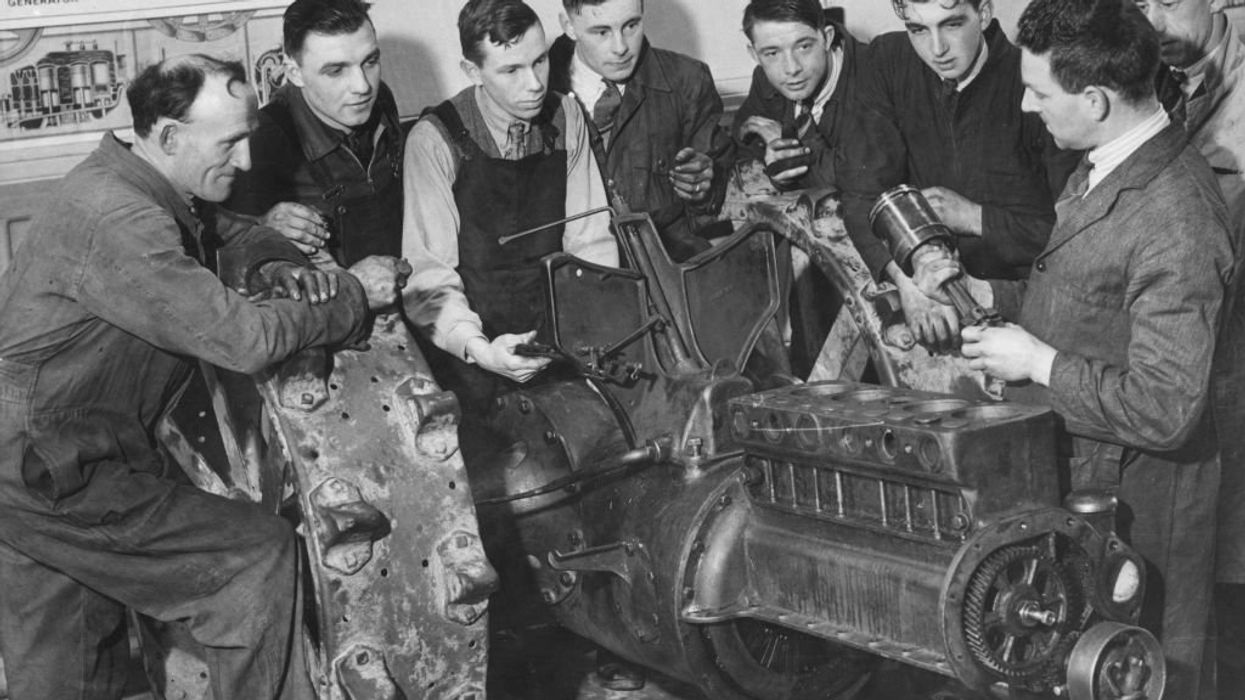
Sgt. 1st Class Garrett Williams, a platoon sergeant with the 82nd Airborne Division’s 1st Brigade Combat Team, demonstrates to Indian Army paratroopers with the 50th Independent Para Brigade how to use an M4 carbine May 4, 2013, at Fort Bragg, N.C. Indian soldiers were familiarized on American weapons as part of Yudh Abhyas 2013, the ninth rendition of an annual training exercise between the armies of the United States and India, sponsored by U.S. Army Pacific. (U.S. Army photo by Sgt. Michael J. MacLeod)\n



